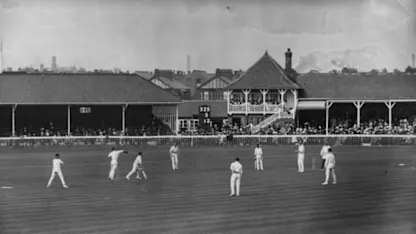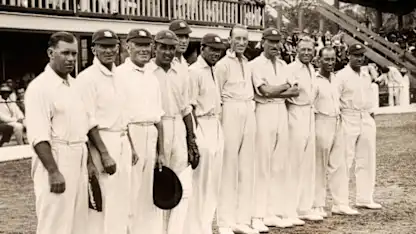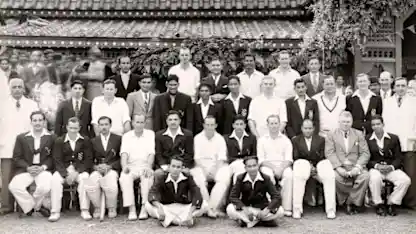ICC | About ICC
History of ICC
1909 - 1963 - Imperial Cricket Conference
The governing body of world cricket, which has 105 countries currently in membership, began its life with some very tentative steps. On 30th November, 1907 the President of the South African Cricket Association, Abe Bailey, wrote a letter to F.E. Lacey, MCC Secretary. Bailey, having accompanied the South African team on their tour of England, was now on his way home.

Test match cricket in 1912
Bailey suggested the formation of an 'Imperial Cricket Board'. The Board's function would be to formulate a set of rules and regulations to govern international matches involving England, Australia and South Africa. He also wished to promote a Triangular Test series between the three countries in England in 1909. Though what was classified as a Test match had taken place on their own soil as far back as 1889, South Africa's 1907 tour to England was the first such visit to include official Test Matches. South Africa had first played Tests against Australia in 1902/03.
The idea of a Triangular Tournament found favour in England, but was rejected by Australia. This was probably on financial grounds - Australia had agreed to tour England in 1909 and was not keen to share the tour with South Africa. Bailey was not deterred and continued to lobby both MCC and Australia. On 15th June, 1909 representatives of all three countries met at Lord's under the chairmanship of the President of MCC, the Earl of Chesterfield, and agreed to stage a Triangular Test Tournament. A month later, under Lord Harris's chairmanship, a second meeting set the Imperial Cricket Conference on its way, when rules were agreed to control Test cricket between the three nations. The Triangular Tournament duly took place in England in 1912. The weather that summer was appalling and problems in Australia meant that their major cricketers refused to come. The tournament was not a success.

The MCC England Cricket Team In The West Indies
There was no further meeting of the Conference until 1921, when the main discussions centered on the use of eight-ball overs. Five years went by without a further meeting, but in 1925-26, MCC sent a team to the West Indies, a visit of particular interest to Lord Harris, who had spent his early years in Trinidad. A West Indies side came close to beating MCC in Georgetown and this performance strengthened the home side's resolve to join the Test-playing countries. When the Imperial Cricket Conference met in England in 1926, delegates from West Indies, New Zealand and India were invited to attend. Later that summer, Lord Harris presided at a second meeting at The Oval, where it was agreed that the membership of the ICC should comprise, 'governing bodies of cricket in countries within the Empire to which cricket teams are sent, or which send teams to England.' This definition rather unfortunately excluded the United States, which had regularly received teams from England since 1859 and had dispatched several teams to England. The meeting effectively created three new Test playing nations, West Indies, New Zealand and India. West Indies played their first Test in 1928, New Zealand in 1929-30 and India in 1932.

Pakistan v Commonwealth XI 1949
From now onward, the ICC met on an almost annual basis except during the war years. The main business of these meetings was to set out future Test tours, check that players were properly qualified and encourage the use of turf pitches as against matting ones. Possible law changes, the enlargement of the wickets for example, also came under discussion.
The next major event was the admission to the ICC on 28 July, 1952 of Pakistan, and in October of that year, Pakistan played their first Test match. In May 1961, South Africa withdrew from the Commonwealth and was thus no longer eligible for ICC membership. However, they did send an 'observer' to the ICC meeting that summer.